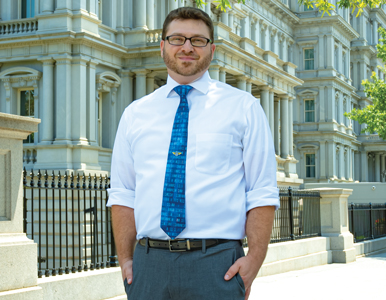
The federal government’s web is wide.
The US Web Design System—a government website software and design toolkit developed in 2015—has helped refresh 400 federal government websites spanning 93 agencies. Login.gov provides more than 40 million Americans secure access to 250 government services, and every day, dot govs process everything from mundane tax return status checks to life-changing health insurance and naturalization applications.
As executive director for the Office of the Federal Chief Information Officer (OFCIO), Jay Teitelbaum is responsible for helping that network to hum, managing overall business functions for an Office of Management and Budget department that oversees federal IT policy, spending, and planning. He coordinates with officials from the White House, Office of the National Cyber Director, and the Department of Homeland Security on cybersecurity efforts; manages OFCIO budgeting and talent acquisition; and assists in its expansive federal IT modernization initiatives.
Teitelbaum and his colleagues enjoy being able to tackle IT-related issues that bubble up from myriad agencies. But most important is OFCIO’s technological end goal: “trying to help improve peoples’ interactions with government and helping rebuild trust in government overall,” says Teitelbaum, who joined OFCIO in May after five years at the United States Digital Service.
In response to a December executive order from President Biden calling for the use of technology to make government services more “accessible, equitable, protective, transparent, and responsive” for everyone from small business owners to disaster survivors, OFCIO is putting taxpayer money where the mouse is. Federal CIO Clare Martorana in June announced that $100 million of the five-year-old Technology Modernization Fund will be invested in projects that aiming to rapidly improve high-impact, high-volume government digital services and tools in the name of customer service.
As he inevitably pitches in with cybersecurity and modernization activities that lay ahead, Teitelbaum will continue to focus on the big picture. Individual IT projects that feel small can still lift a bureaucratic burden for millions.
“If you can improve something at work, it might be helping a neighbor, a friend, or someone who’s trying to become an American citizen,” Teitelbaum says of OFCIO’s impact. “There’s a reward in seeing tangible results.”